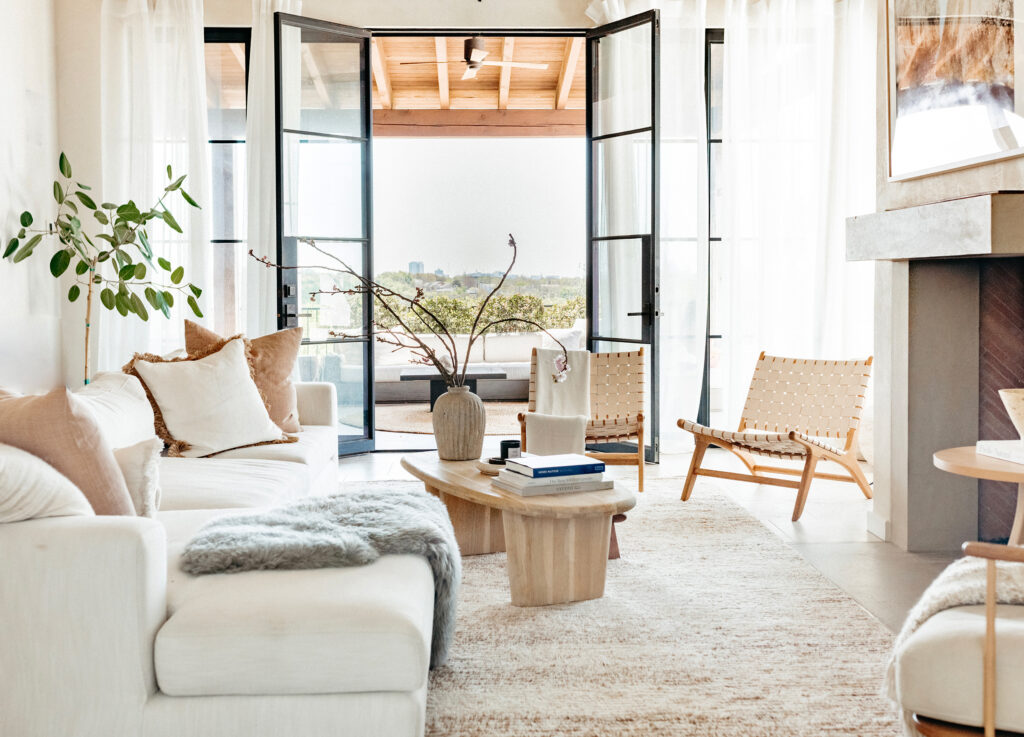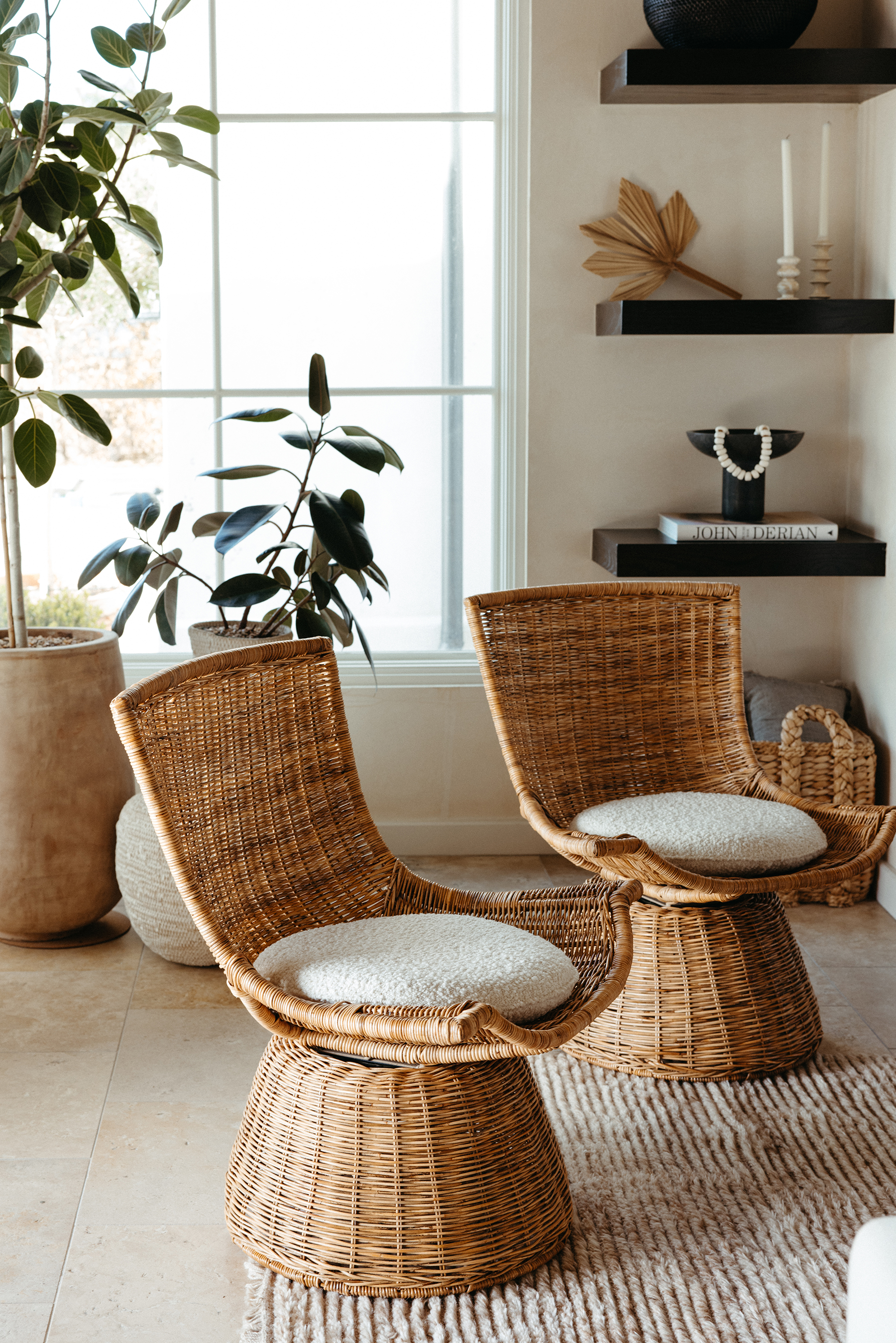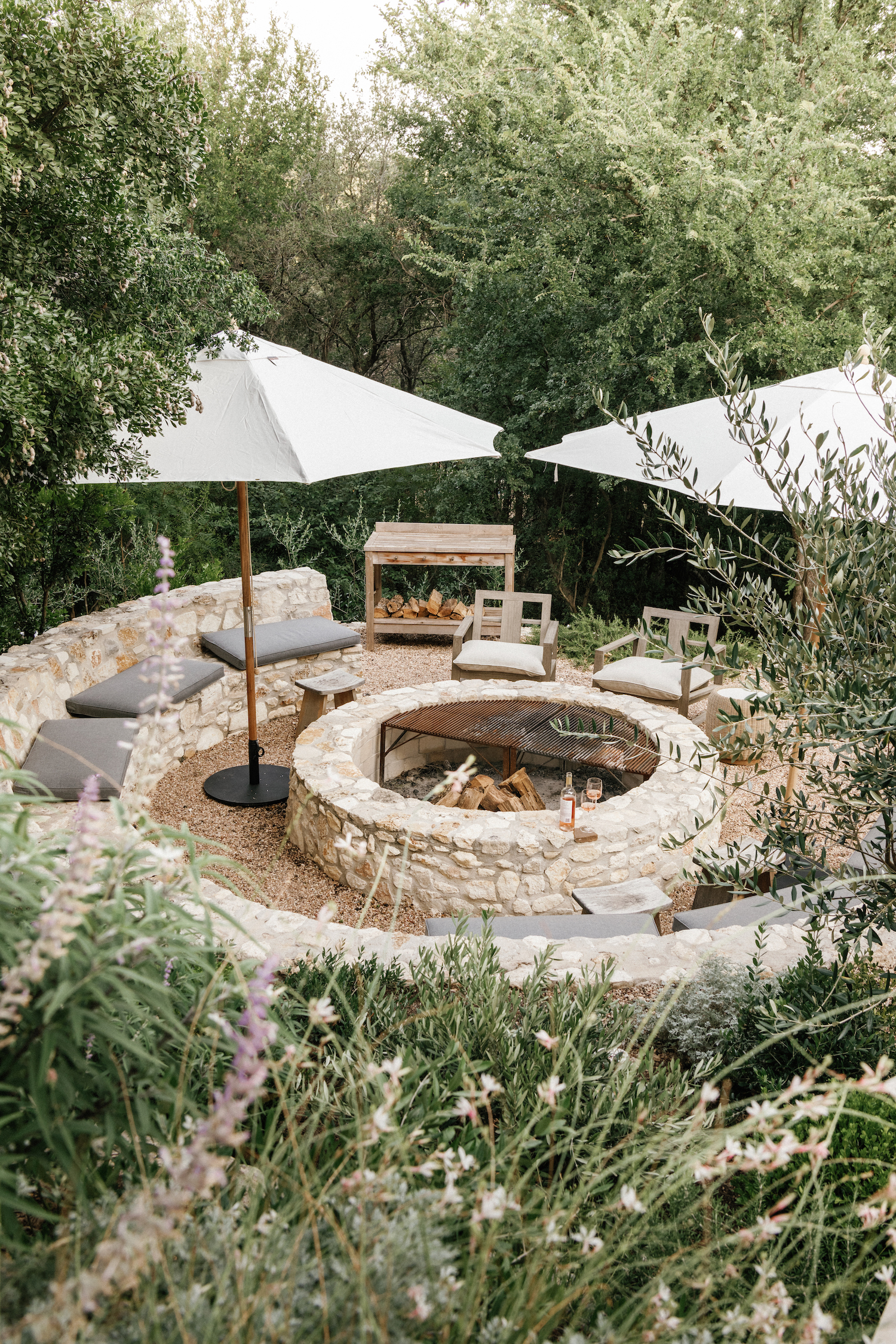
I’m Moving My Dining Room Outside—Here Are My 5 Rules for Indoor-Outdoor Living
How to embrace nature indoors and outdoors.

Join lifestyle contributor Camille Styles as she and her family transform a 1950s Malibu beach bungalow into their dream retreat—and in the process, discover a slower, more intentional way of living, rooted in the beauty of the West. It’s all part of our journey to the Sunset 2023 Idea House, a home that displays the latest innovations in Western home design.
One of my main goals for our beach house is that it will be a space that fosters a deep sense of well-being—an “out of office” vibe that encourages everyone who enters to slow down and sync up with the rhythms of beach life. When I visualize myself in the “after,” I see a space that encourages calm, connection, and physical and emotional health.
As many of us work from home these days, we’re inspired to treat our outdoor spaces as extensions of our living space—and thanks to Malibu’s temperate climate, this project is giving us the opportunity to do just that. We’ve been working closely with our landscape architect, Michael Fioré, to come up with some creative design solutions that will extend the livable square footage straight into the outdoors. Immersing ourselves in nature doesn’t have to mean going on vacation—sometimes it’s as simple as spending time in our own backyards.
Here are a few creative design solutions we’re using to foster a deeper daily connection with nature both indoors and out.
1. Consider Transitions

Michelle Nash
Designing a home with a seamless indoor-outdoor flow has become increasingly popular in recent years. The goal? To bring more connection to nature into everyday life, and encourage easy transitions between indoor and outdoor living.
One of the most effective ways to create this flow is by incorporating large doors that can be opened up to the outside space. For our beach house renovation, we’re installing an almost 30-foot wall of sliding doors that will create a dramatically wide passageway when they’re completely open. Natural light and fresh air will flood into the space, creating a sense of openness and easy access between the indoor and outdoor spaces.
2. Create Continuity

Michelle Nash
I want to create a sense of continuity between our indoor and outdoor living areas that erases any hard distinctions between the two spaces. That said, it takes a little know-how to come up with creative solutions to make outdoor furniture look and feel as comfy as what’s inside—it has to stand up to wear, tear, and inclement weather (especially at the beach!)
Thankfully, many of the natural materials that I love for the indoors also work great outside. Concrete, teak, stone, tile, and terracotta are materials that can withstand outdoor conditions, ones that I’ll carry through both my indoor and outdoor furniture and finishes. When it comes to fabrics, I’ll opt for weather-resistant fabrics outside, but I’ll use a neutral color palette that’s similar to what I’m using throughout our interiors for cohesion. We’ll also incorporate typically “indoor” decor items in our outdoor living spaces, like pendant light fixtures, textural rugs made of natural materials, sculptural objects, and candlelight that will make the outside feel every bit as inviting as our indoor rooms.
3. Create an Outdoor Kitchen

Michelle Nash
Since cooking and gathering friends together is one of my greatest passions, an outdoor kitchen was top-of-my-wishlist for this project. I’m designing a space that feels both considered and casual, with the outdoor kitchens of Spanish islands as my inspiration. Though it’ll feel simple and timeless (think raw stucco, rough wood, and simple finishes), it’ll be outfitted with the conveniences I need to cook for a crowd: a grill, sink, counterspace, and shelves to store dishes and supplies. And best of all? Our indoor kitchen has a large window above the sink that opens straight out to the outdoor counter. I can already imagine myself prepping ingredients, then passing them straight through to my husband Adam to throw on the grill.
4. Design Spaces for Al Fresco Meals

Michelle Nash
Many people are surprised to hear that we’re designing our beach house’s main dining room to be outside! Though it’s a bit unconventional, we tend to eat almost all of our meals in Malibu in the sunshine, and having a great outdoor dining room is the perfect way to marry our love for the beautiful weather with our passion for entertaining. It was even the inspiration behind my brand that makes handmade goods for the table.
Though our space will have a covered pergola, lighting, and even outdoor heaters so we can enjoy it all year round, an outdoor dining room can be as simple as a table and chairs on a backyard patio. Even a small setup provides the luxury of enjoying meals outside and connecting with nature more often in your everyday routines.
5. Use Drought-Tolerant Plants to Define the Outdoor Spaces

Michelle Nash
Beautiful, lush plants are what makes an outdoor living space. One thing we learned from our years of landscaping our backyard in Austin? By planting drought-tolerant species that will thrive and establish borders between the different areas of the space, you can create a sense of coziness and warmth. It’s the element that creates structure and boundaries between different areas, just as walls do inside a house.
In an effort to use as many native varieties as possible (especially important in Malibu, where wildfires are a major factor in determining plant varietals), these are the plants we’re focusing on in our landscape plan:
- California Sagebrush
- Agave
- Manzanita
- Lavender
- Rosemary
- Trees including Strawberry Tree and Coast Live Oaks, that we’ll mix with ornamental olive and citrus trees.
Our goal is a free-flowing, organic design using heartier plants that can withstand the elements.
Read the Current Issue Here!
Get one year of Sunset—and all kinds of bonuses—for just $29.95. Subscribe now!
